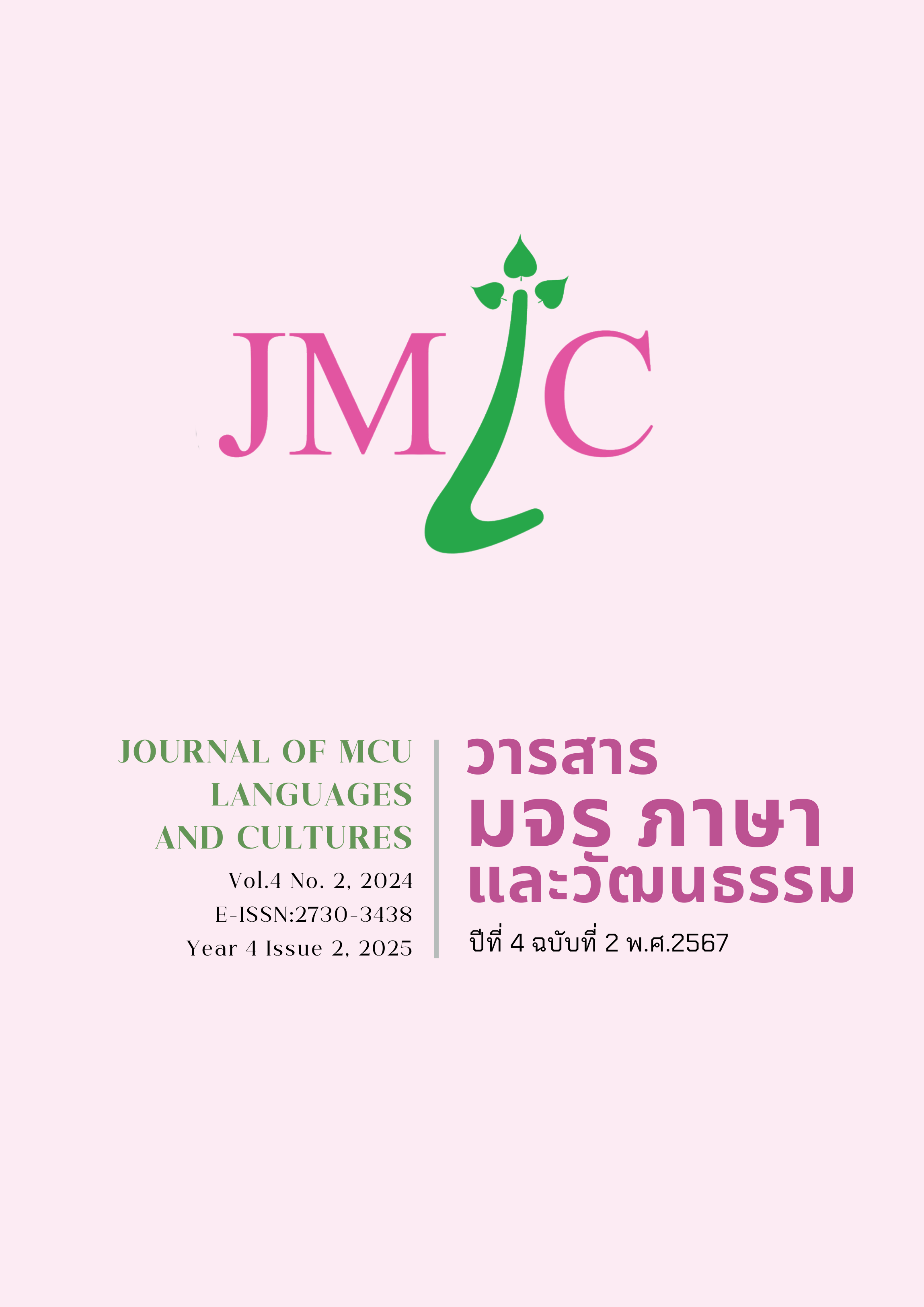The Concept of Śūnyatā in Madhyamaka and Yogācāra
คำสำคัญ:
ศูนยตา, สวภาวะ, มัธยมกะ, โยคาจาระบทคัดย่อ
บทความวิจัยนี้มีวัตถุประสงค์ 3 ประการคือ 1) เพื่อศึกษาแนวคิดศูนยตาของมัธยมกะ 2) เพื่อศึกษาแนวคิดศูนยตาของโยคาจาระ 3) เพื่อศึกษาเปรียบเทียบแนวคิดศูนยตาของมัธยมกะและโยคาจาระ โดยใช้ข้อมูลจากคัมภีร์มูลมัธยมกการิกา ไตรสวภาวนิทเทส รวมไปถึงเอกสารและงานวิจัยที่เกี่ยวข้องเป็นหลักในการศึกษาเปรียบเทียบแนวคิดศูนยตาของนิกายมัธยมกะและนิกายโยคาจาระ ผลการศึกษาพบว่าแนวคิดศูนยตาของทั้งสองนิกายนั้นมีความเหมือนกันในระดับสมมุติสัจจะ เป็นศูนยตาเพราะทุกสรรพสิ่งอาศัยกันและกันเกิดขึ้น แต่ในระดับปรมัตถ์นั้นโยคาจาระมีความเห็นว่านิพพานอันเป็นผลของการเห็นศูนยตานั้นเป็นสิ่งที่มีอยู่โดยที่ไม่ต้องอาศัยปัจจัยใดๆเกิดขึ้น เกิดจากการเห็นกระแสของวิญญาณที่บริสุทธิ์จากความเห็นว่ามีผู้รู้และสิ่งที่ถูกรับรู้อันเป็นทวิภาวะ โยคาจาระยืนยันว่านิพพานอันเป็นโลกุุตรธรรมนั้นมีสวภาวะ ในขณะที่มัธยมกะยังยืนยันความเป็นสิ่งอาศัยกันและกันเกิดขึ้นแม้กระทั่งนิพพาน หมายถึงว่าแม้แต่นิพพานก็ไม่สามารถเกิดขึ้นได้เองอย่างอิสระ ต้องอาศัยปัจจัยเกิดขึ้น ไม่มีสวภาวะ
เอกสารอ้างอิง
กนกวรรณ กรุณาฤทธิโยธิน. (2561). ศึกษาวิเคราะห์อาลยวิชญาณตามแนวคิดของพุทธปรัชญาสำนักโยคาจารในทัศนะของพุทธปรัชญาเถรวาท. อยุธยา. ดุษฎีนิพนธ์หลักสูตรพุทธศาสตร์ดุษฎีบัณฑิต บัณฑิตวิทยาลัย มหาวิทยาลัยมหาจุฬาลงกรณ์ราชวิทยาลัย
นาคารชุนะ. (2565). มูลมัธยมกการิกา. โสรัจจ์ หงส์ลดารมภ์ แปล. พิมพ์ครั้งที่ 2. กรุงเทพมหานคร: สำนักพิมพ์มูลนิธิพันดารา.
ปีเตอร์ เดลลา สันตินา. (2561). ต้นไม้แห่งโพธิ. สมหวัง แก้วสุฟอง แปล. พิมพ์ครั้งที่ 4. กรงเทพมหานคร. สำนักพิมพ์โพธิบัณณ์.
พระไตรปิฎกภาษาไทย ฉบับมหาจุฬาลงกรณราชวิทยาลัย. เล่ม 12, เล่มที่ 16. พิมพ์ครั้งที่ 1. กรุงเทพมหานคร: โรงพิมพ์มหาจุฬาลงกรณราชวิทยาลัย, 2539.
พระนาคารชุนะ. (2478). รัตนาวลี. พระสารประเสริฐ (ตรี นาคประทีป) แปล. พิมพ์ครั้งที่ 1. กรุงเทพมหานคร.
มหาอำมาตย์จตุรงคพล. อภิธานัปปทีปิกาฎีกา. (2527). พิมพ์ครั้ง 1. กรุงเทพมหานคร: สำนักพิมพ์เทคนิค.
สุมาลี มหณรงค์ชัย. (2548). พระนาคารชุนะกับคำสอนว่าด้วยทางสายกลาง. กรุงเทพมหานคร: สำนักพิมพ์ศยาม.
สุมาลี มหณรงค์ชัย. พุทธศาสนามหายาน.พิมพ์ครั้งที่ 2. กรุงเทพมหานคร. สำนักพิมพ์ศยาม : 2550
Garfield, Jay L. (1995). The Fundamental Wisdom of the Middle Way: Nāgārjuna’s Mūlamadhyamakakārikā. New York: Oxford University Press.
Harris, Ian Charles. (1991). The Continuity of Madhyamaka and Yogacara in India Mahayana Buddhism. The Netherlands.
Herman, A.L. (1983). An Introduction to Buddhist Thought. Lanham: University Press of America.
Liu, Ming-Wood. (1985). The Mind-Only Teaching of Ching-ying Hui-yüan: An Early Interpretation of Yogacara Thought in China. Hawaii: University of Hawaii Press.
Nagao, Gadjin M. (1989) The Foundational Standpoint of Madhyamika Philosophy. New York: State University Of New York Press.
Nagao, Gadjin M. (1991). Madhyamika and Yogacara: A Study of Mahayana Philosophies. New York: State University Of New York Press.
Nhat Hahn, Thich. (2001). Transformation at the base. California: Parallax Press.
Ruegg, David Seyfort. (1981). The Literature of the Madhyamaka School of Philosophy in India. Wiesbaden: Harrassowitz.
Siderits, Mark. (2007). Buddhism as Philosophy: An Introduction. Indianapolis: Hackett Publishing.
Takakusu, Junjiro. (1949). The Essentials of Buddhist Philosophy. Honolulu: Asia Publishing House.
Westerhoff, Jan. (2009). Nagarjuna’s Madhyamaka: a philosophical introduction. New York: Oxford University Press.
Williams, Paul. (2009). Mahayana Buddhism: The Doctrinal. (2nd ed.). New York: Routledge.
Wood, Thomas E. (2009). Mind Only: A Philosophical and Doctrinal Analysis of The Vijananavada. New Delhi: Motilal Banarsidass Publisher Private Limited.
ดาวน์โหลด
เผยแพร่แล้ว
รูปแบบการอ้างอิง
ฉบับ
ประเภทบทความ
สัญญาอนุญาต
ลิขสิทธิ์ (c) 2025 วารสาร มจร ภาษาและวัฒนธรรม

อนุญาตภายใต้เงื่อนไข Creative Commons Attribution-NonCommercial-NoDerivatives 4.0 International License.





